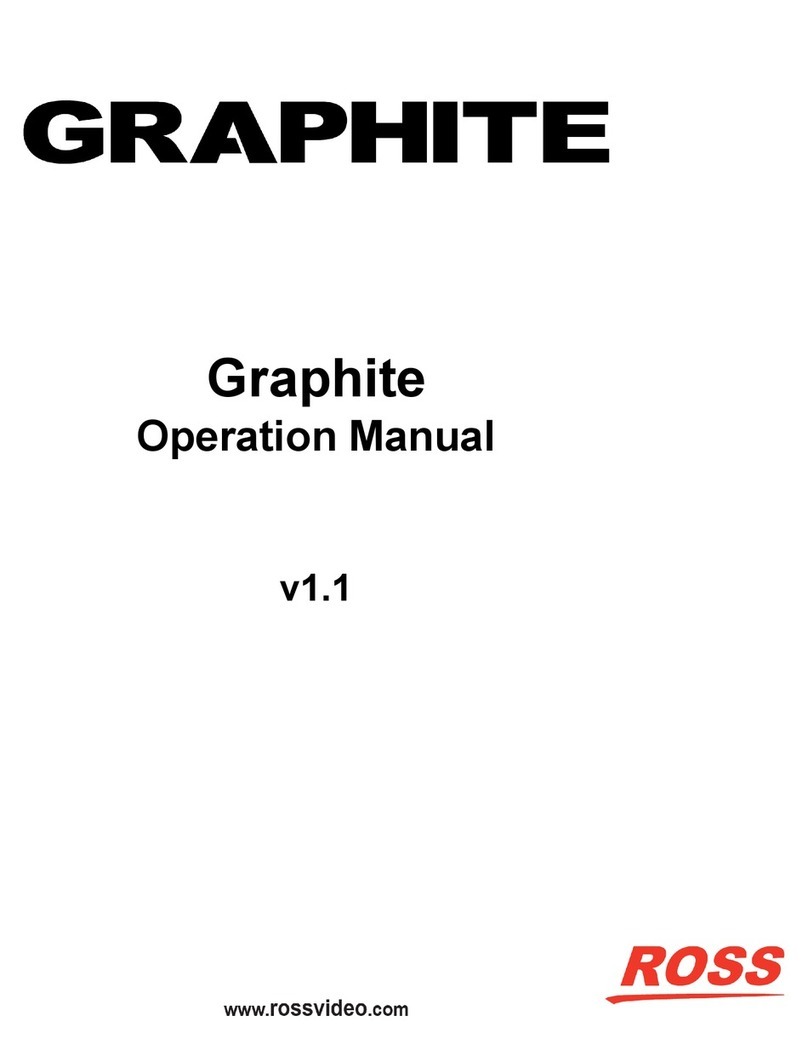
7
Technical Support: (+1) 613-652-4886
After Hours Emergency: (+1) 613-349-0006
E-mail: techsupport@rossvideo.com
4. Perform one of the following:
• MUX-8258-A and MUX-8258-B — enable the AES channel that the Dasdec-2 outputs.
• MUX-8258-4C and MUX-8258-8C — enable up to two channels as the Dasdec-2 outputs two
channels of analog audio.
5. Set all other channels to Mute.
6. If you are using an MUX-8258-A or MUX-8258-B:
a. Select the AES Inputs tab.
b. Configure the Delay and Gain as required for the audio Inputs 1 and 2.
7. If you are using an MUX-8258-4C or MUX-8258-8C:
a. Select the Analog Inputs tab.
b. Configure the Delay and Gain as required for the audio Inputs 1 and 2.
Customizing the EAS Text Overlay
The MC1-MK provides an overlay that displays an EAS horizontal text crawl in real time. The overlay is
automatically loaded into Logo 4 and associated with Keyer 4 of the MC1-MK. When EAS is enabled, do
not use Logo 4 and Keyer 4 for any other purpose.
To customize the EAS text overlay
1. Select the Configuration node to display the interface in the right-half of DashBoard.
2. Select the SAGE EAS Setup tab.
If the EAS Setup tab is unavailable, verify that you have correctly installed your EAS device and it is
communicating with the MC1-MK.
3. From the Preview area, select the type of event message you want to customize. The following
will occur once you select a category button:
For normal EAS operation, set the Preview to OFF.
• The EAS Setup tab settings display the stored values for the selected category.
• A test EAS message automatically displays on the Preset bus (the Key 4 button is now lit on the
Preset bus). This enables you to verify your changes to the EAS text overlay.
4. Use the % Top Row option to adjust the vertical position of the EAS text overlay. Note that this
setting is not applicable to the Emergency Alert (High Priority) categories as these messages are
fixed to the top of the screen.
5. Use the Text Size option to adjust the font size of the text overlay from smallest (1) to largest (10).
Note that actual text size is dependent on the video format.
6. Select a text color and/or background color for the text overlay using the provided fields. The EAS
Text Attributes field reports an error when the text color and the background color match.
When using very long EAS messages, the MC1-MK may use a smaller font size and/or may disable
transparency. The exact length depends on the widths of each font character.
7. To apply a drop shadow to the text overlay, select the Drop Shadow box.
8. Use the Pan Speed slider to set the speed of the EAS text crawl across the screen. The default is 2.
9. Use the Repeat Count to set the number of times to display the entire text crawl before taking it
off air. The default is 2.
10. Repeat for each message category you want to configure.


























